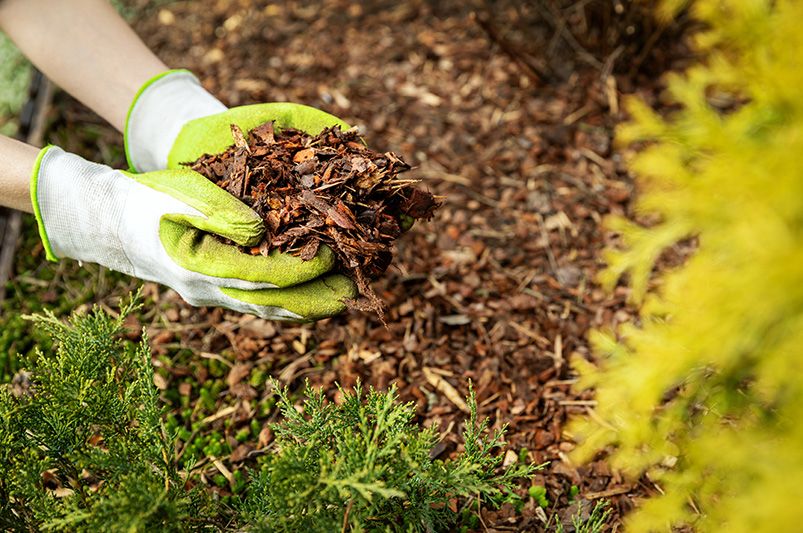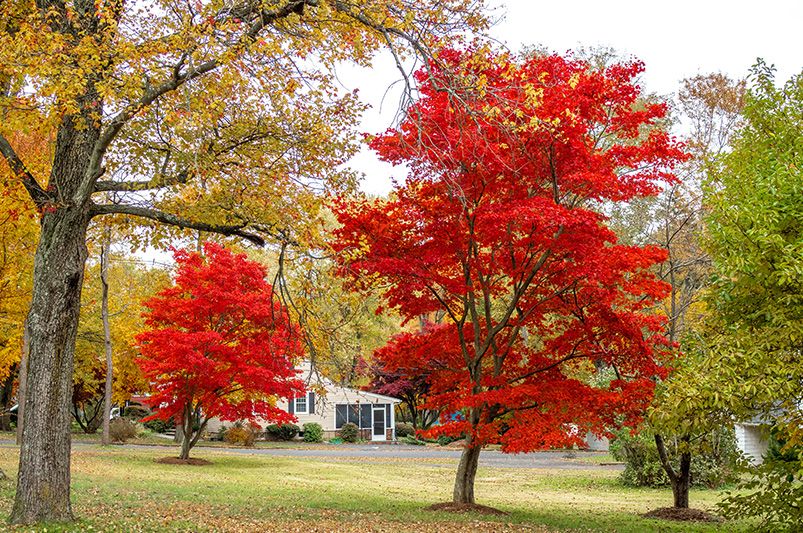
How to Care for Newly Planted Trees Before Winter
Published: 03/09/2025 | Updated: 11/09/2025
Planting a new tree is an investment in the future of your landscape. But once it’s in the ground, your job isn’t over—especially if you’re heading into the colder months. Young trees are more vulnerable to stress from frost, wind, and fluctuating soil conditions. A little extra care in the fall can mean the difference between a thriving tree come spring and one that struggles to survive.


Here’s how to give your newly planted trees the best possible start before winter sets in.
1. Get the Watering Schedule Right
Even as the weather cools, your tree’s roots are still establishing themselves. Consistent moisture is key.
-
Early Fall: Water deeply once or twice a week, depending on rainfall. Focus on soaking the soil 12–18 inches deep to encourage strong root growth.
-
Late Fall (Before the First Freeze): Give your tree a final deep watering to saturate the soil. Moist soil retains heat better than dry soil, which helps protect roots from freezing.
-
Winter: In regions where the ground doesn’t freeze solid, water during warm spells if the soil is dry.

2. Mulch to Protect Roots
A fresh layer of mulch is like a blanket for your tree’s roots. It insulates the soil, locks in moisture, and prevents temperature fluctuations.
-
Spread 2–4 inches of organic mulch (wood chips, shredded bark, or compost).
-
Keep mulch a few inches away from the trunk to avoid rot.
-
Extend mulch out to the tree’s drip line for maximum protection.
3. Wrap Young Trunks
Thin-barked trees like maples and fruit trees are prone to frost cracks and sunscald during winter. Wrapping helps shield them.
-
Use tree wrap or light-colored plastic tree guards.
-
Start at the base and wrap upward to the first branches.
-
Remove wraps in spring to prevent pests and diseases.
4. Protect Roots from Frost Heave
Repeated freezing and thawing can push young roots out of the soil, exposing them to air and damage. To reduce frost heave:
-
Mulch generously.
-
Add extra soil around the base if settling occurs.
-
In very cold areas, consider placing evergreen boughs or burlap over the root zone for added insulation.
5. Avoid Late Fertilization
Skip nitrogen-heavy fertilizers in late fall. Fertilizer encourages new growth that won’t have time to harden before winter. Instead, focus on protecting the roots until spring.

6. Keep an Eye on Wildlife
In winter, deer, rabbits, and rodents often feed on tender young bark. Consider adding:
-
Mesh or wire guards around the trunk.
-
Repellents designed for winter use.
Final Thoughts
Caring for a young tree before winter doesn’t take much effort—but it makes a huge difference in long-term health. By watering correctly, mulching, wrapping, and protecting roots, you’ll give your trees the best shot at surviving their first winter and thriving for years to come.
Free Resource for You
Want to make sure your new trees survive their first winter? We’ve put together a simple one-page checklist with everything you need to protect roots, trunks, and soil.
Download the Winter Tree Care Checklist
Dreaming of a yard filled with beautiful trees?
Whether it’s shade, curb appeal, or seasonal color, the right trees can completely transform your landscape. ShrubHub’s online designers can help you choose the perfect varieties and create a plan that brings your vision to life—while making sure they’ll thrive for years to come.
[Start Your Custom Landscape Design with ShrubHub Today →]


